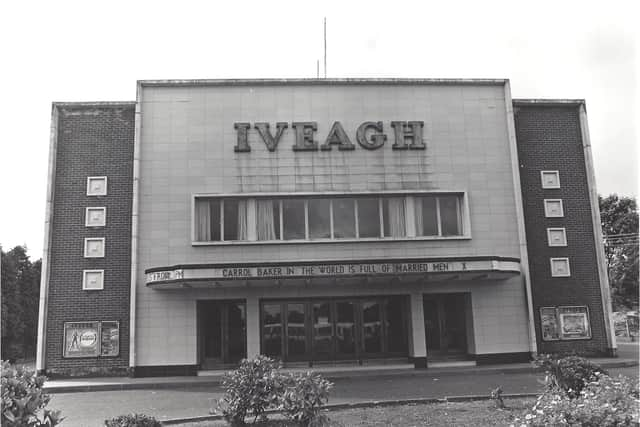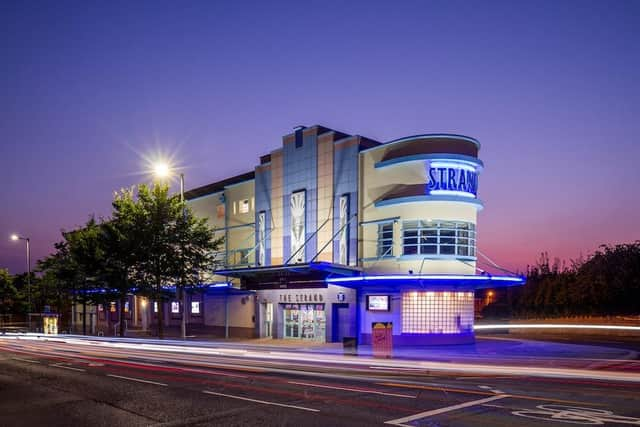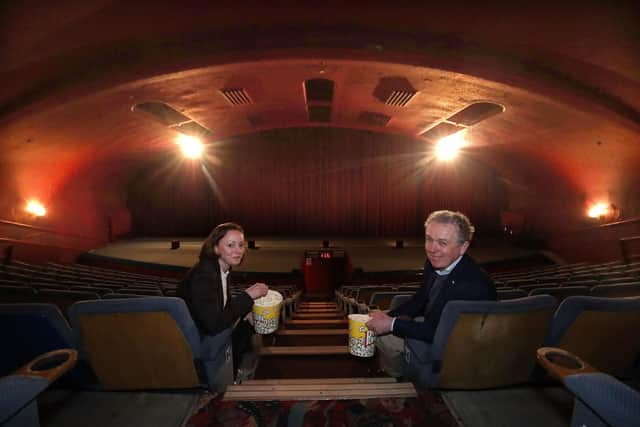Call out for memories of Northern Ireland’s lost ‘picture palaces’
and live on Freeview channel 276
And whether you call it going to the pictures, the flicks or the movies, the Strand would like to hear from you.
Designed by preeminent cinema architect John McBride Neill and opened in 1935, the Art Deco Strand in east Belfast is the oldest cinema in Northern Ireland – the only survivor from that golden era when picture palaces were a main feature of almost every town and village.
Advertisement
Hide AdAdvertisement
Hide AdStrand Arts Centre heritage officer Rosie Hickey said: “The Lasting Picture House project aims to get communities across Northern Ireland involved in contributing memories of going to the cinema.


“From attending the Saturday morning Minors Club to kissing in the back row of the movies, cinema-going is part of our collective DNA. And our own personal memories of trips to the cinema can instantly transport us back to different times and places in our lives.”
Strand Arts Centre CEO Mimi Turtle said: “As part of our engagement about the social history of the Strand, it has become clear that there are also many stories to be told about all Northern Ireland’s picture houses that have been lost over the decades – from John McBride Neill’s other grand designs including the Curzon and Majestic in Belfast and the Tonic in Bangor to cinemas that were once at the heart of hometowns and cities such as Enniskillen, Portrush, Ballymena, Donaghadee and Derry/Londonderry, among many others.
“Through chatting with cinemagoers and schoolchildren, we’re gaining a better understanding of what it is about a trip to the picture house that resonates positively with audiences – be that the distinctive architecture, opulent décor, community atmosphere or shared experience of laughing or crying at a film with other people.”
Advertisement
Hide AdAdvertisement
Hide AdThe Lasting Picture House is part of a wider investment by The National Lottery Heritage Fund to help finance the planning stages of Strand Arts Centre’s proposed refurbishment. The stories gathered will be woven throughout the fabric of the renovated building – creating a permanent home for memories of cinemagoing in Northern Ireland and inspiring future generations about the social history and impact of cinema.


Dr Paul Mullan, director, Northern Ireland at The National Lottery Heritage Fund said: “Heritage in Northern Ireland can play a huge role in bringing people together and creating a sense of pride in people’s hometowns and cities.
“The Strand Arts Centre is not just a place to see wonderful stories on the silver screen, but is itself at the heart of recording the stories of Northern Ireland’s cinemagoers across the generations. We are delighted to support this project thanks to money raised by National Lottery players and would encourage people to share their memories and experiences of our lost and lasting picture houses.”
The Lasting Picture House builds on the success of an earlier Strand Stories project, supported by The National Lottery Heritage Fund.
Advertisement
Hide AdAdvertisement
Hide AdTo find out more about how you can contribute your own memories of cinemas in Northern Ireland, or donate any items of cinema memorabilia, visit www.strandstoriesbelfast.com.


A SHORT HISTORY OF THE STRAND
Strand Cinema opened its doors on 7 December 1935, with one screen and 1170 seats. It was designed by John McBride Neill – a prolific local cinema architect – who also designed the Curzon (Ormeau Road), the Majestic (South Belfast), and the Tonic (Bangor).
It opened during the boom years of cinema in Belfast, when the building was part of a sprawling network of cinemas scattered all over the city. By the end of the 1930s, Belfast alone boasted over 40 cinemas with many more dotted around towns across Northern Ireland.
The Strand’s design was influenced by its proximity to the nearby shipyard of Harland and Wolff, featuring curved walls and port-hole details. Over the years it has been likened to an ocean liner.
Advertisement
Hide AdAdvertisement
Hide AdInitially the Strand was operated by Union Cinemas. But in 1937 it was taken over by ABC Cinemas who operated it until 1977. During this time, the ABC Minors Matinee Club was a very popular fixture of the Strand. The ABC Minors Matinee took place every Saturday and featured sing-alongs, competitions and films for children. No parents were allowed – just Honorary ‘Uncles’ and stewards to look after the audience.
Despite the popularity and glamour of cinemas in the early 1950s, by the end of the decade the cinema business fell into decline, largely due to the growth of television. Many cinemas across Belfast closed their doors in the 60s and 70s. And in the early 1980s the survival of the building was very uncertain.
Luckily, it was reborn as ‘Strand Variety’ – a live performance venue – in 1984. The new venture was masterminded by local businessman Ronnie Rutherford. The opening show was the John Anderson Big Band Show, and highlights of the variety theatre years included performances by the Nolan Sisters and The Drifters.
Ronnie had also harboured a desire show films at the Strand again, and in 1988 the Strand was reborn as four screen multiplex and was an immediate success. In 1999 the Strand embarked on a revamp, emphasising its Art Deco style. And in 2013, the Strand Arts Centre took on the tenancy of the building to meet an evidenced need for additional arts provision in east Belfast with plans for a multi-million-pound refurbishment.